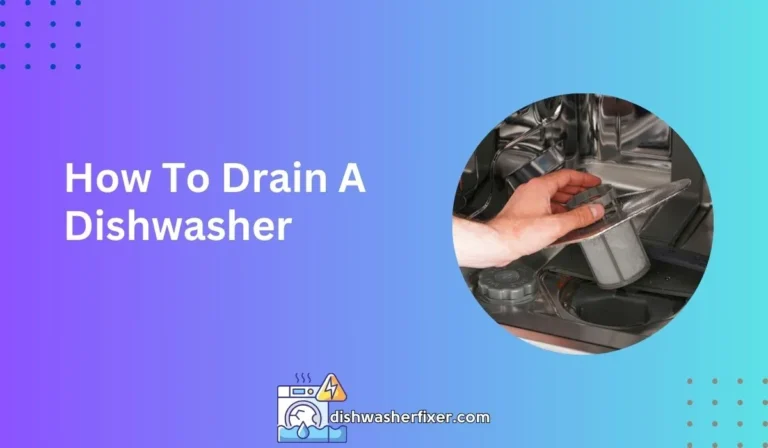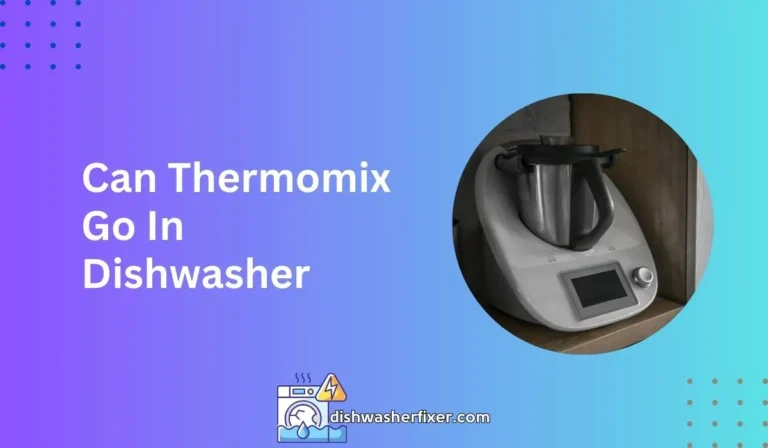How to Unclog a Dishwasher Drain Hose: Quick Fix Guide
To unclog a dishwasher drain hose, disconnect it, then flush it with a mixture of baking soda and vinegar. Follow with hot water. If needed, gently use a straightened coat hanger to remove clogs. Reattach the hose securely.
Identify the Clog
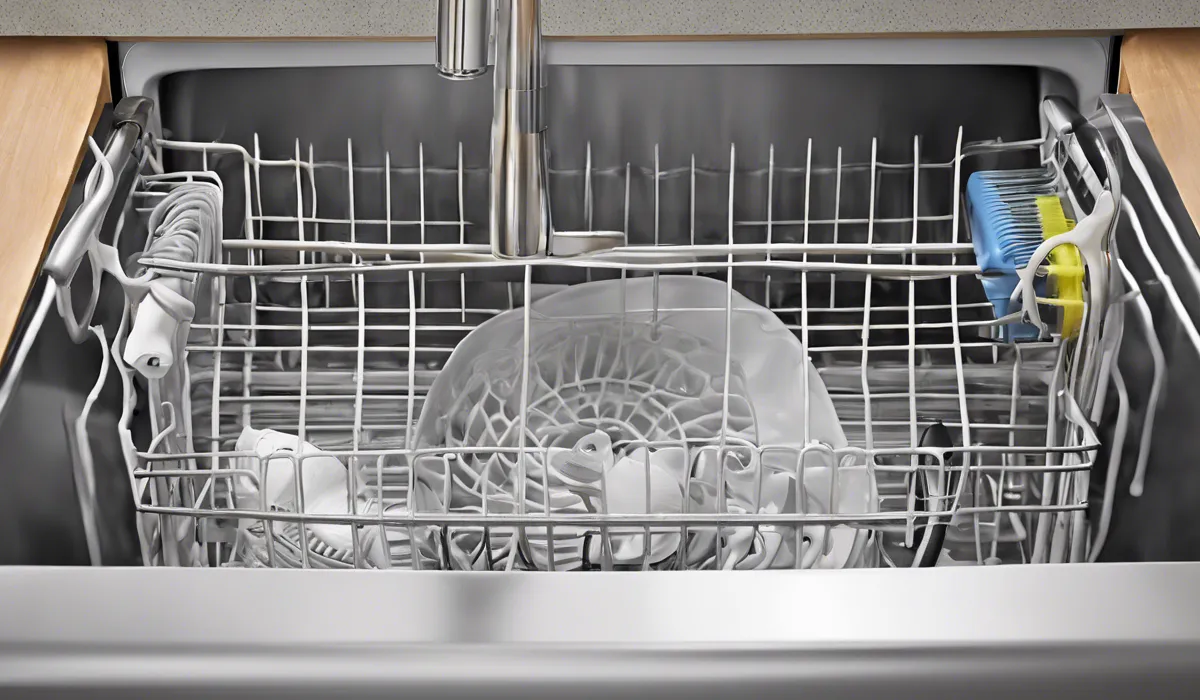
Locating the Dishwasher Drain Hose
Before tackling a clogged dishwasher, it’s crucial to pinpoint the location of the dishwasher drain hose. Usually, this hose is found connecting the dishwasher to the sink or garbage disposal underneath the kitchen counter.
It’s a flexible pipe, often made of plastic or rubber, and is responsible for carrying water from the dishwasher to the drain.
To ensure accuracy in locating the hose, consult your dishwasher’s manual, which often provides a clear diagram of the appliance’s parts.
Checking for Visible Clogs
Once you’ve located the drain hose, inspect it for any visible clogs. These might appear as food particles, glass shards, or other debris that can easily block water flow.
Sometimes, merely wiping away the debris with a cloth can solve the problem. However, if the clog is not immediately visible, further inspection may be necessary.
Disconnecting the Hose
For a thorough inspection, the drain hose needs to be disconnected. Turn off the dishwasher and unplug it from the power source to ensure safety.
Place towels or a shallow pan beneath the hose connections to catch any water that may spill out. Gently twist and pull the hose clamps or connectors to release the hose.
Once disconnected, you can now check for internal blockages by bending the hose in different sections to loosen any hidden debris.
Inspecting for Internal Blockages
Look inside the hose using a flashlight to spot any obstructions inside. If the clog is deep within the hose or not visible, you may need to employ a method to clear it without actually seeing it.
Remember to handle the hose gently to avoid any damage, as a punctured hose will require replacement.
Clearing the Clog
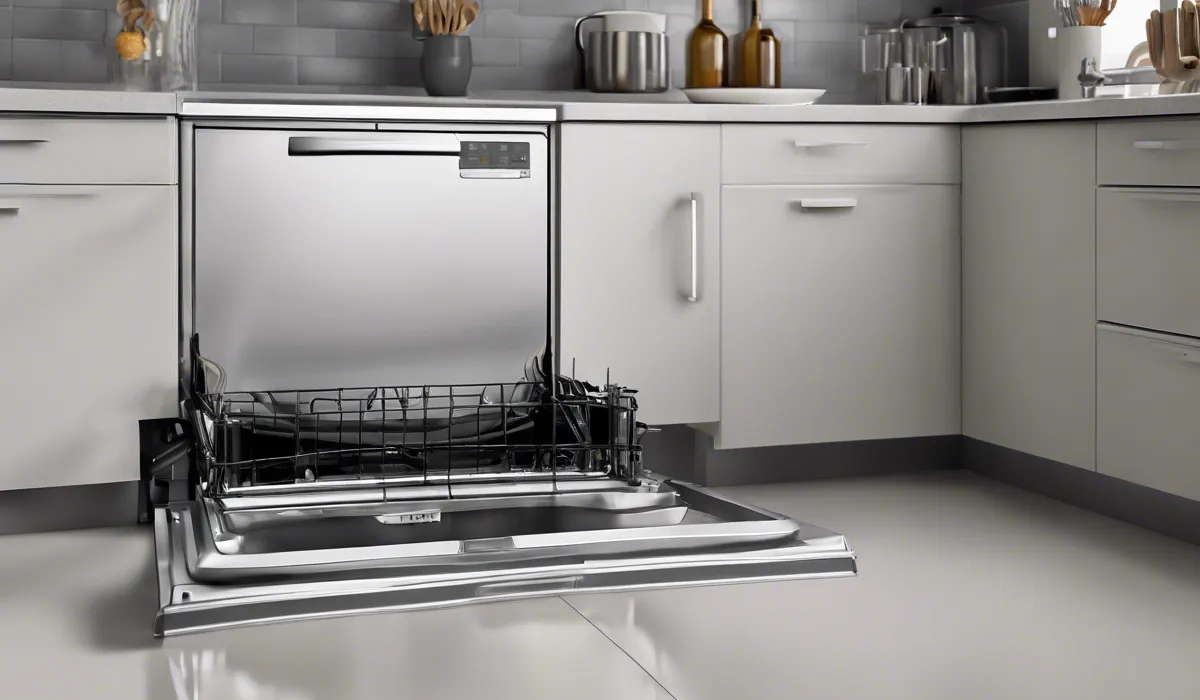
Preparing the Vinegar and Baking Soda Mixture
Begin by mixing a solution of one part vinegar to one part baking soda. This natural and effective cleaning solution will help break down the clog without the harshness of chemical cleaners.
Pour the mixture directly into the drain hose and allow it to sit for 15-30 minutes to dissolve the clog. The reaction between vinegar and baking soda can help to dislodge stubborn blockages.
Using a Plumber’s Snake or Wire Hanger
If the clog persists after the baking soda and vinegar treatment, you may need to manually remove it.
A plumber’s snake is a flexible tool that can navigate through twists and turns in the drain hose to reach and break apart clogs.
If you do not have a plumber’s snake, straighten a wire coat hanger, leaving a small hook on one end to fish out debris.
Carefully insert the tool into the hose and gently twist and push to dislodge the clog. Be cautious not to puncture the hose with the wire.
Flushing the Hose with Hot Water
After breaking up the clog, flush the drain hose with hot water to wash away any remaining particles.
You can use a funnel to direct the flow of water into the hose or detach the hose completely and run hot water through it.
This step will ensure that any loosened debris is fully cleared from the hose, restoring proper drainage.
Reassembling and Testing
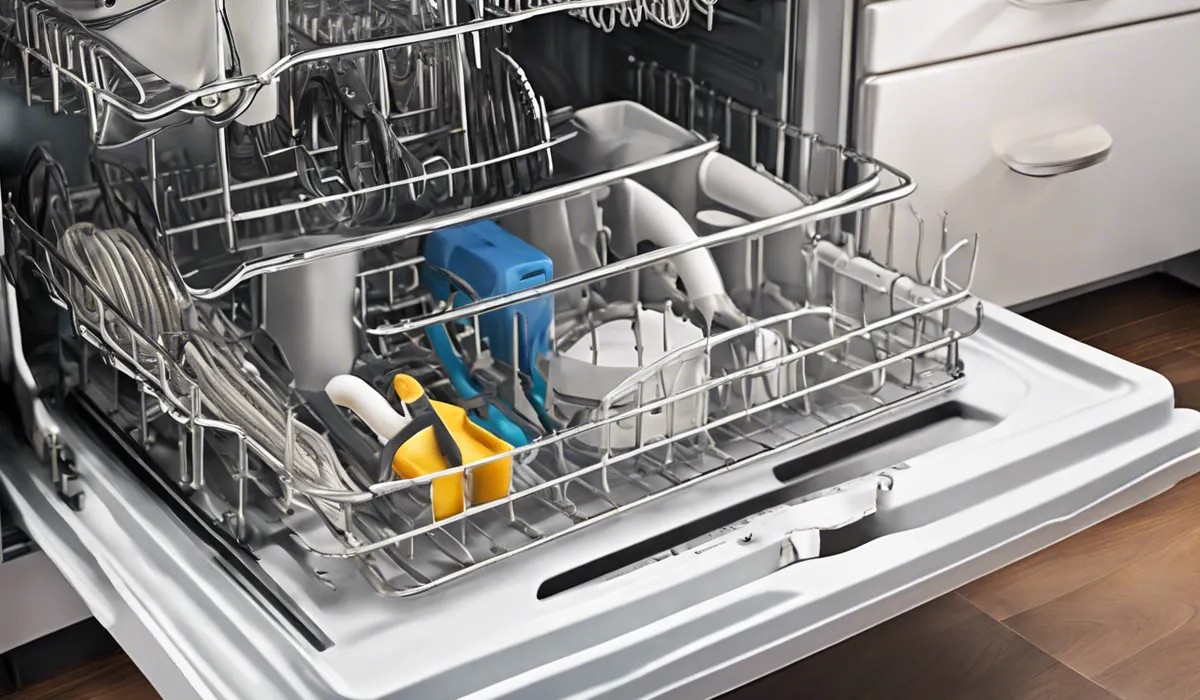
Reattaching the Drain Hose Securely
After the clog is cleared, it’s time to reattach the drain hose. Slide the hose back onto its connection point and secure it with clamps or connectors.
Ensure that the hose is fitted tightly to prevent any water leakage. Double-check all connection points for a snug fit before moving on to the testing phase.
Running the Dishwasher for a Test
Plug the dishwasher back in and turn on the power. Select a short wash cycle and run the dishwasher without any dishes inside.
Listen for any unusual sounds and watch for proper water drainage. This test will help confirm that the clog has been successfully removed and that the dishwasher is functioning correctly.
Checking for Leaks Under the Dishwasher
Finally, after the test cycle, check underneath the dishwasher for any signs of water leaks. It’s important to catch any potential issues early to prevent water damage to your kitchen.
If you find a leak, you may need to tighten the hose connections or inspect for any damage to the hose that might require a replacement.
With these detailed steps, you’re well-equipped to handle a clogged dishwasher drain hose. Remember that regular maintenance and cleaning of your dishwasher can prevent clogs and ensure a smooth-running kitchen appliance.
If you follow these instructions and still encounter problems, do not hesitate to contact a professional for assistance. Keep your dishwasher in top shape, and it will keep your dishes sparkling clean!
FAQs About Unclogging a Dishwasher Drain Hose
What is the first step to unclog a dishwasher drain hose?
The first step is to disconnect the dishwasher drain hose from the dishwasher and sink.
What mixture should I use to flush the drain hose?
Flush the drain hose with a mixture of baking soda and vinegar to help break up the clog.
How do I rinse the dishwasher drain hose after using baking soda and vinegar?
After the baking soda and vinegar mixture has had time to work, follow up by flushing the hose with hot water to rinse away the clog.
Can I use a tool to remove a clog from a dishwasher drain hose?
Yes, if needed, you can gently use a straightened coat hanger to remove any remaining clogs from the hose.
What should I do after unclogging the dishwasher drain hose?
Once the clog is removed, reattach the hose securely to both the dishwasher and sink to complete the process.
Final Thoughts
Unclogging a dishwasher drain hose involves disconnecting it and using a baking soda and vinegar solution followed by hot water to flush it out.
For persistent clogs, a straightened coat hanger can be used carefully to remove blockages. After clearing the hose, ensure it is reattached securely to prevent leaks.
